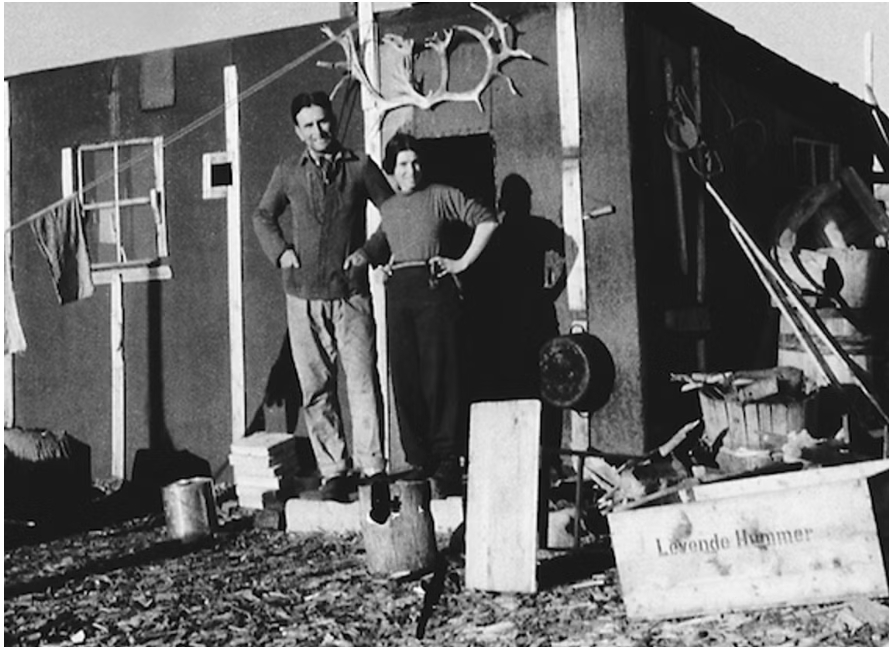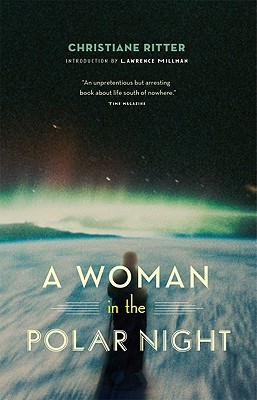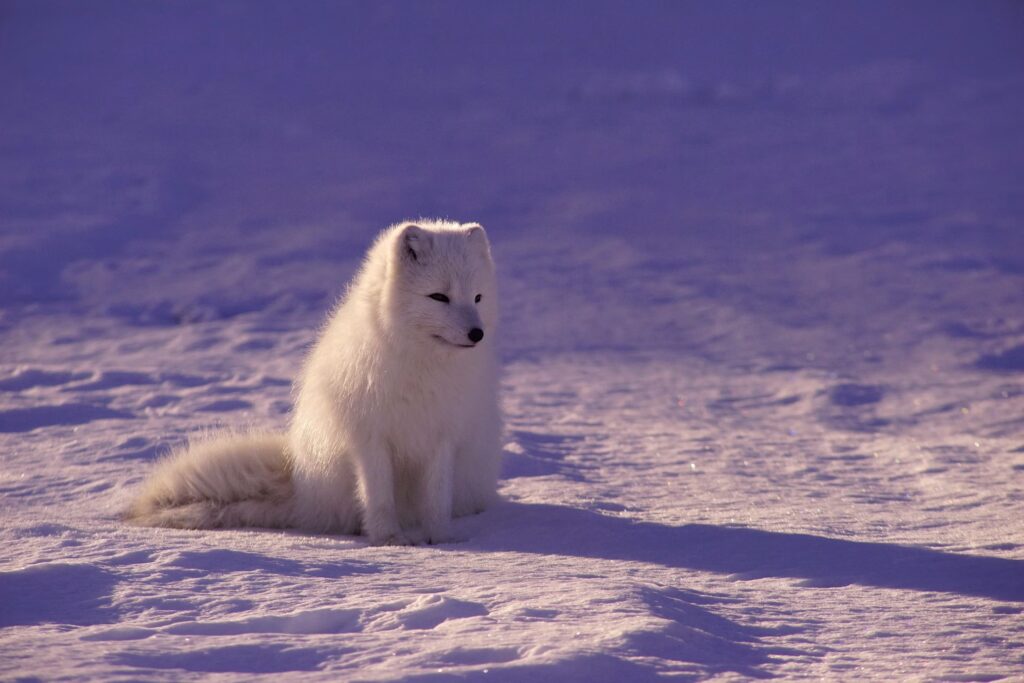The loneliness is overpowering, but so is the beauty
I don’t typically read memoirs, but since there are no native Svalbard writers, choosing an account from someone who actually lived there felt like the right choice for me. And what a beautiful experience it was.
Memoirs not your thing? Check out my other suggestions for Svalbard!
I found myself totally immersed in the world of this book, and Ritter had me Googling like crazy to see the Wijdefjord, the arctic foxes, the black and white pattern of the ptarmigan, and the red sandstone of the geological Devon period for myself.
And to my absolute delight, I stumbled upon old pictures of the Ritters and even this virtual tour of the hut and landscape they lived in! The hut is still there to this day for you to visit, should you fancy a trip to the north coast of Svalbard.

(Bjørn Klauer/Huskyfarm/Karin Ritter)
The story of the book is this: In 1934, Christiane Ritter left the comforts of her life in Austria to spend a year on the north coast of Spitzbergen, Svalbard, with her husband Hermann, who was an experienced Arctic trapper. Before embarking on this incredible journey she was an artist and a homemaker, and she imagined a year of relaxation, with ample time to draw, read, knit, and sleep.
It was only upon arrival that she realized she would be living with two men in a tiny and ramshackle hut in a desolate stoney landscape on the shores of a lonely fjord. With a stove that did not work properly, sketchy food supplies and hundreds of miles from the nearest settlement.

Ritters very personal account of the year in Svalbard is shaped by her urban upbringing and lack of wilderness experience. At first she is understandably horrified by the abysmal living conditions and the bleak foggy landscape. She continues to recount the daily fight for survival with brutal detail.
We are with her, when she is left alone for weeks while the men go on hunting trips, struggling to free herself when the hut is buried under snow. We feel the sting of her frozen hands, when she does laundry in glacial water, the suffocating frustration when the stove (again) fills the entire hut with smoke, and the dread of isolation and endless night pressing on her sanity. And we feel the growing desperation, when the food supplies get dangerously scarce because there are no animals to hunt.
“And as though I were unsubstantial, no longer there, the infinite space penetrates through me and swells out, the surging of the sea passes through my being, and what was once a personal will dissolves like a small cloud against the inflexible cliffs”
But as her year in Spitzbergen unfolds, we also watch her slowly fall in love with the enchanting beauty of the Arctic. We see her spirit endure as she finds moments of quiet beauty and grows attuned to the rhythms of the stark wilderness. And her initial fear and discomfort give way to awe, inner peace and an almost spiritual connection with the wild.

A woman in the polar night is an account of human survival and resilience in the face of adversity, but it ends up being so much more that. Ritter’s memoir is a true testament to the transformative power of nature. Her mesmerizingly beautiful descriptions of the endless polar night and the shimmering, otherworldly light of the Arctic day, brought tears to my eyes more than once. Her philosophical musings on life, death, and humanity’s place in the natural world still resonate clearly a century later.
“A year in the Arctic should be compulsory to everyone,” Ritter would say in her later years. “Then you will come to realise what’s important in life and what isn’t.”’” Ritter died in Vienna in 2000 at the age of 103.
We watch the shining rhythm of the spheres until the veils disappear, and come to ourselves, small beings struggling forward mute and heavy through the storm on the earth.
This book was the perfect way to conclude my journey through the islands of the north. After exploring literature from Iceland, the Faroe Islands, and Greenland, this deeply moving glimpse into Svalbard was a fitting end. If like me, you have ever dreamed of going to the Arctic, this beautiful memoir will transport you there — without the frostbite.
I wonder if you are still with me? Is anyone following along? Please leave a comment and make me happy 🙂
As much as I’ve loved visiting these frozen shores, I am now very ready to set sail toward a new region. Where should we go next?




